
Paper is flat, so how do turn it into a decorative 3D ball? Using geometry, a bit of math and our artistic talents, we can make original decorations for a garland, a crown or put in a basket. Let’s be creative and make decorative 3D pieces of different shapes and sizes.
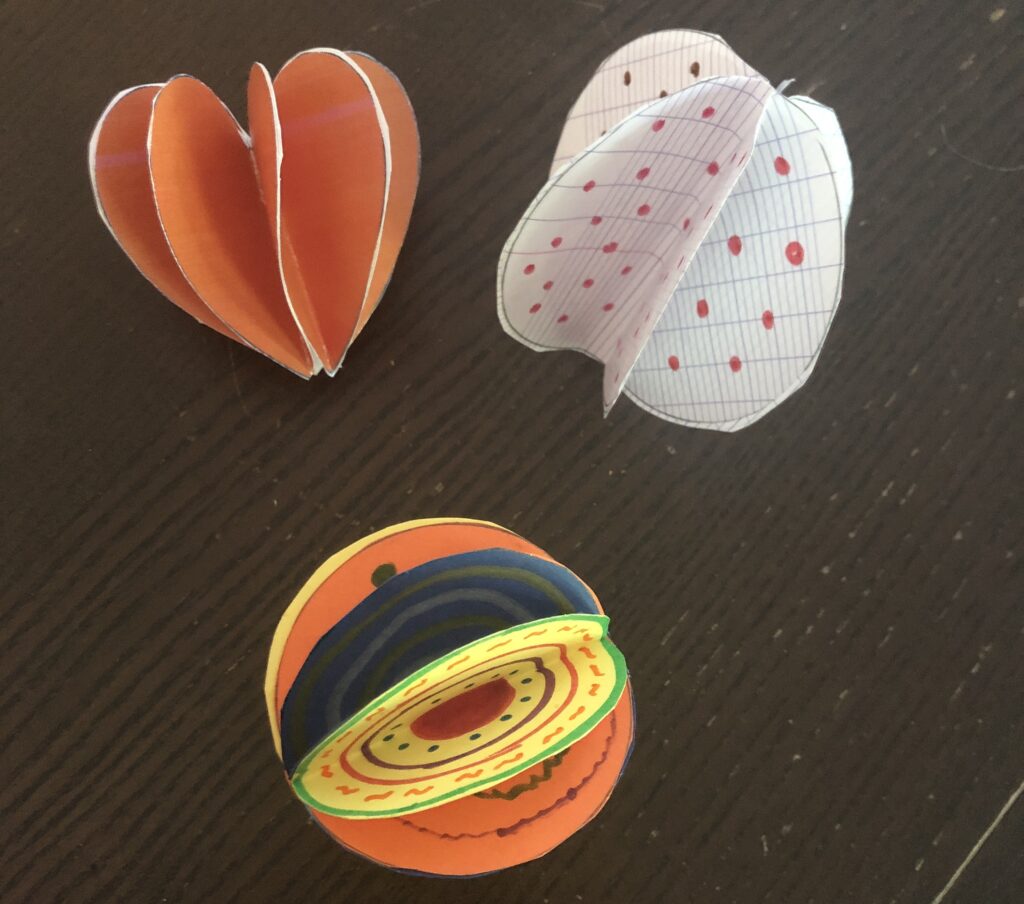
In this workshop, we explore the transformation of flat paper into three-dimensional decorations for crowns, necklaces, or baskets. The activity involves creating paper balls, ranging from Christmas ornaments to artistic embellishments. By unleashing creativity, participants produce balls of various shapes, sizes, and colors. This experience encourages the exploration of geometric concepts and material properties while stimulating artistic imagination. Participants thus develop their understanding of spatial dimensions and manual dexterity.
Mummy, why do big heavy boats float but tiny little marbles sink in the water? It’s because of their shape and their composition! Here is a little experiment to explore these differences.
Why do large ships float while small beads sink? In this workshop, children dive into the world of material properties by discovering those that float and those that sink. They will categorize a variety of objects based on their shapes, compositions, or weights, formulate hypotheses, and test their flotation theories for each object. They will try to understand the concepts of buoyancy and density while developing their skills in observation and scientific reasoning. They will then take on the challenge of making items that sink float and vice versa. This workshop promises an educational and fun aquatic adventure for young participants.
Cannons and catapults are powerful and dangerous weapons based on the physical principle of “to every action, there is a reaction.” Let’s create mini-cannons and catapults and throw cannon… no; coton or paper balls!
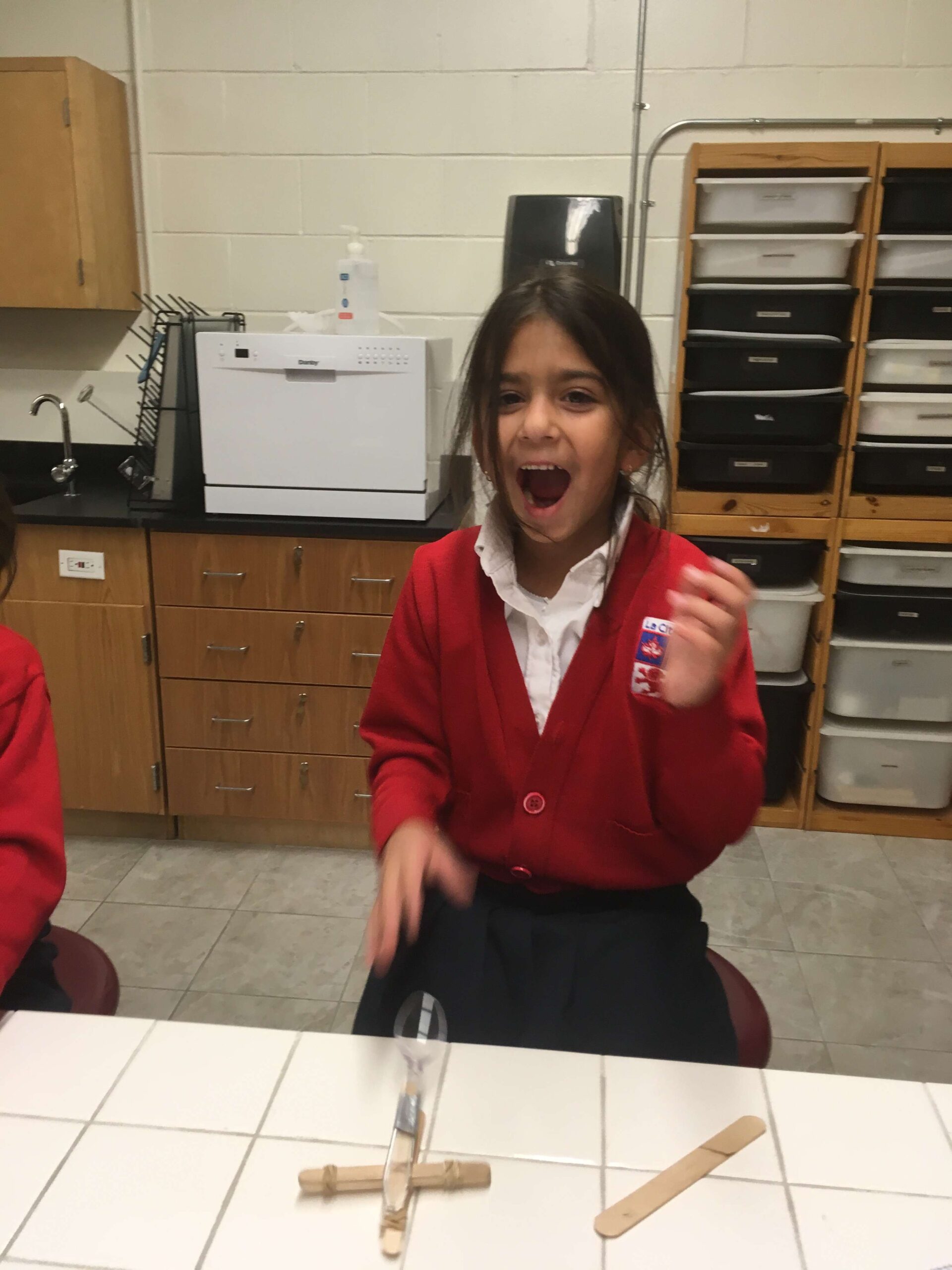
During this workshop, kids will build a cannon and a catapult using basic materials and launch paper projectiles. Through hands-on construction, they’ll explore fundamental principles of mechanics and physics, including force, trajectory, and momentum. By adjusting variables such as angle and force, they’ll learn about projectile motion and the impact of different launch conditions. This interactive activity promotes an understanding of core physics concepts while fostering creativity and problem-solving skills.
Why use a helmet? What are the best materials to protect from a free fall? What are parachutes for? Let’s build and test the best defences and protections against a free fall in this experiment devoted to gravity. A jump in parachute is dreamy and scary, but not in this DYI parachute challenge, where we will drop inanimate objects safely!

Why use a helmet? What are the best materials to protect from a free fall? What are parachutes for? In this STEAM workshop, children design and test parachutes to protect a toy during a fall. By combining science, technology, engineering, art, and mathematics, they explore principles of aerodynamics, air resistance, and design. Through experimentation with various materials and configurations, they develop their understanding of motion physics and parachute design. This hands-on activity fosters creativity, problem-solving, and experiential learning.
How do we combine electronics and creativity? We make a light-up card using electric circuits.
Let’s create an electronic circuit using a copper tape and explore the properties of open and closed circuits. Through hands-on experimentation, we will learn about the flow of electricity and the components of a circuit and gain insight into circuitry principles and electrical conductivity. This interactive experience fosters creativity, problem-solving skills, and an understanding of the intersection between art, technology, engineering, and mathematics.
I turn on the light, warm my snack, watch TV… Without electricity, all this would not be possible! But, how does electricity circulate? How do you “cut” the current? An electrifying experiment will help us solve these mysteries.
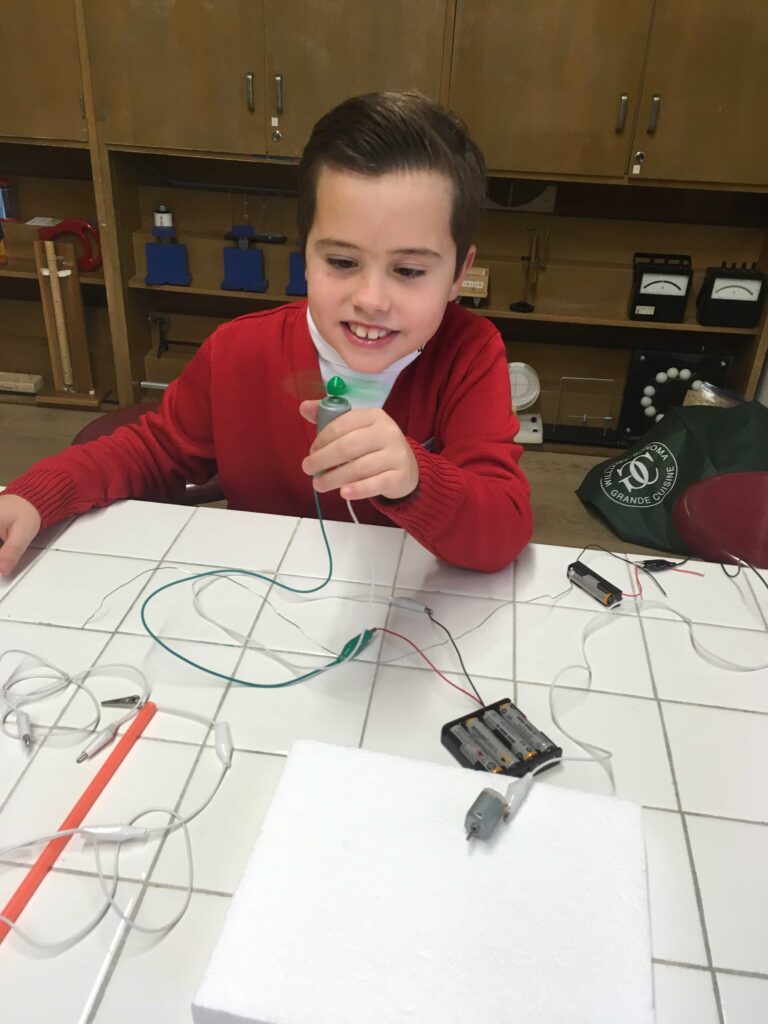
I turn on the light, heat up my snack, watch TV… Without electricity, it wouldn’t be easy. But how does electricity “flow”? How do we cut the power? An electrifying experiment will help unravel these mysteries! Children will dive into the fascinating world of electrical circuits by building their own lighting system. They will discover the concepts of conductors and insulators while assembling simple circuits. Using their newly acquired skills, they will also create a skill and dexterity game, adding a playful touch to their exploration of electricity. This workshop promises to ignite the curiosity of young inventive minds while developing their science skills and problem-solving abilities.
Who will build the highest, lightest, biggest most solid structure? With a little creativity, basic materials, and teamwork, we will build a table, a boat, a tower, shelves or something else… Whatever today’s challenge is, we are ready!
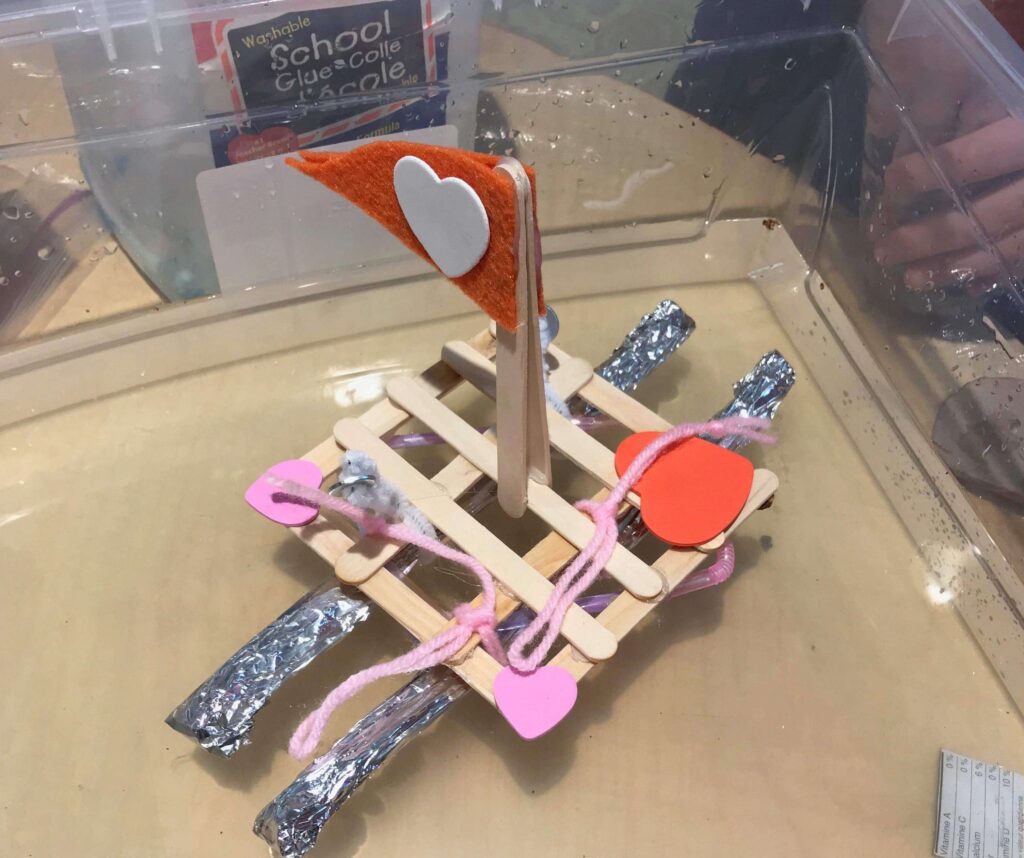
A typical STEM construction challenge engages participants in designing and building a structure using principles of science, technology, engineering, and mathematics. In our challenges, students are tasked with solving a problem or achieving a specific goal within given constraints. They begin by brainstorming ideas, then move on to planning and designing their structure using mathematical and scientific concepts. During the construction phase, they apply engineering principles to create a stable and functional design. Finally, they test their structure to assess its performance and make any necessary adjustments. This hands-on challenge promotes critical thinking, problem-solving, and teamwork skills while fostering creativity and innovation.
What is density? Does it have to do something with weight? Let’s test this phenomenon with a solute in a solvent.

What is density? Does it have to do with mass? Let’s study this phenomenon by creating a multicolored cocktail of solute dissolved in a solvent. In this liquid science workshop, young scientists will prepare solutions of different densities and create their own multicolored density column in test tubes! They will learn to use pipettes, calculate concentrations of different solutions, and establish the relationship between concentration and density. They will form distinct layers of coloured solutions based on their respective densities and take on the challenge of recreating a rainbow of gradual densities. Children understand that the densest solution sinks in the test tube while the least dense one floats. This workshop offers a hands-on experience where scientific principles are explained with a light approach in French.
Melt chocolate without fire, without an oven or a heater… how is that possible? By building a solar oven, of course!
In this STEM workshop, kids embark on an exciting journey to harness the power of the sun by creating and testing their very own solar ovens. With simple items like cardboard, aluminum foil, and plastic wrap, they construct their solar ovens, learning about solar energy absorption and heat transfer along the way. Once built, they put their ovens to the test, experimenting with different food items to see how effectively their creations can cook using only the sun’s rays. This hands-on experience not only teaches them about renewable energy and sustainability but also sparks their curiosity and creativity in exploring scientific concepts.
What is a kaleidoscope? An optical illusion? Magic? Art? Actually, it is a little bit all these things. We will solve this mystery by each making our own decorated instrument.
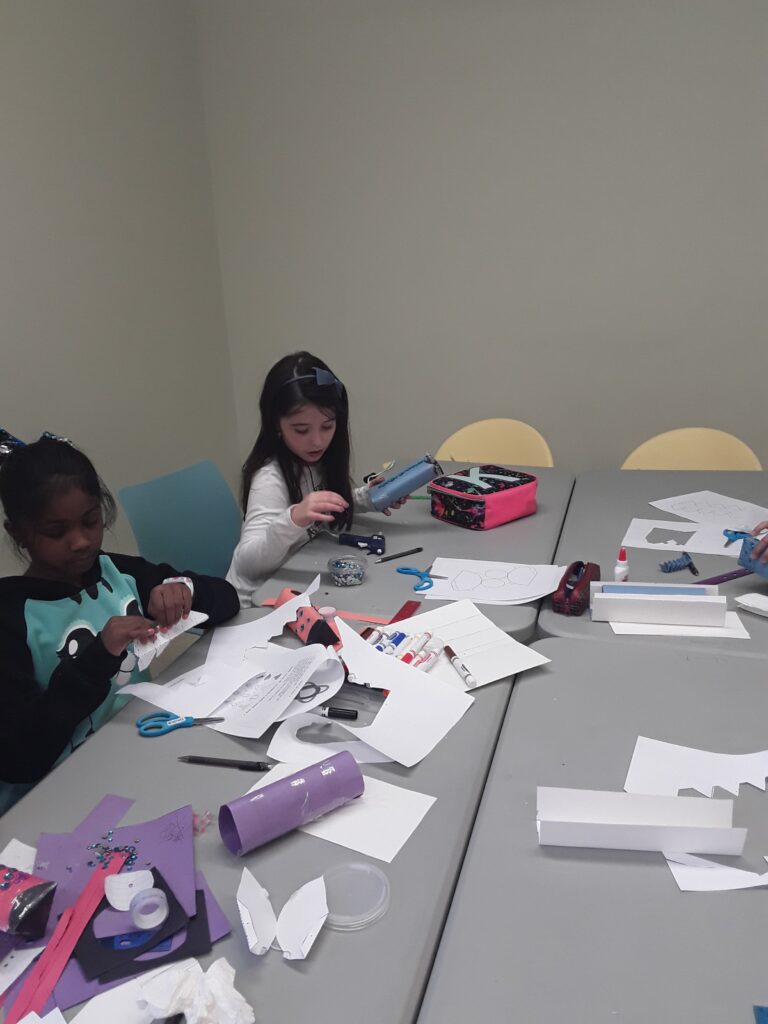
What is a kaleidoscope? An optical illusion? Magic? Art? In fact, it’s a bit of all that. It’s an instrument developed over 200 years ago that uses the reflection of light on mirrors to create enchanting repetitive patterns. In this workshop, children will make their own kaleidoscope and are introduced to the terms reflection and refraction of light while being captivated by the physics of the shimmering patterns on reflective surfaces. This simple yet captivating play of light was used as a tool for prestidigitation in the 19th century because of its fascinating nature.
We can’t go to an amusement park every day, but we can make our own roller coaster and play with it when we want!
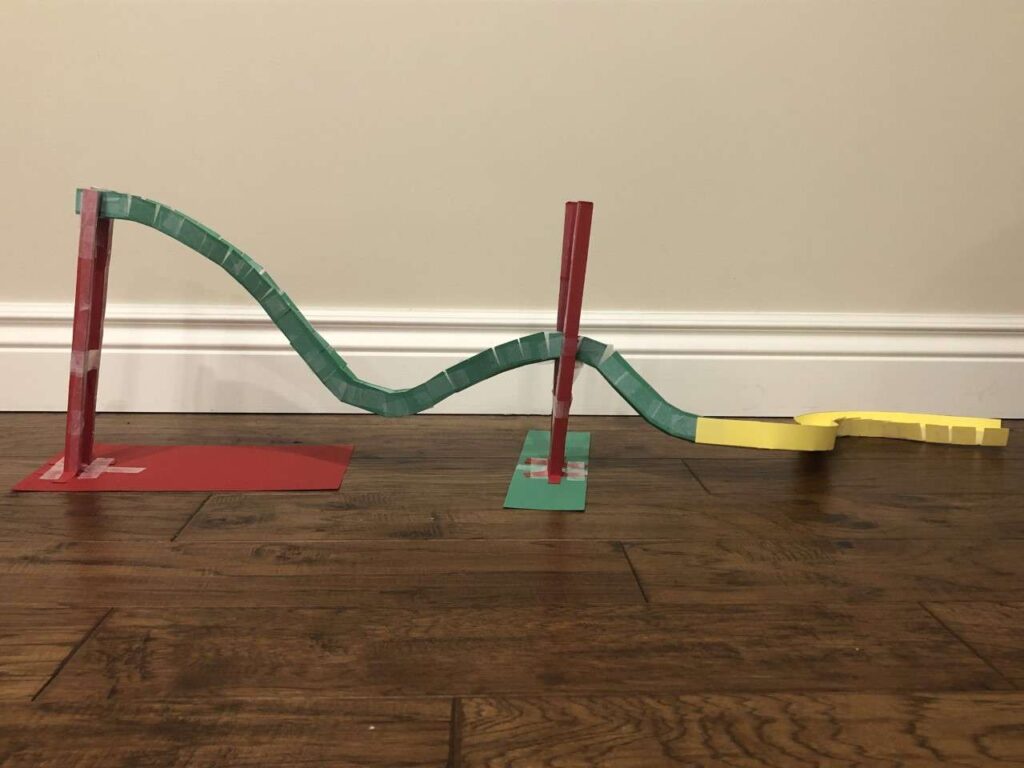
Welcome to our roller coaster workshop! Students embark on an exciting adventure where physics comes to life. Using a template, they create their own roller coasters and explore concepts like gravity, friction, and kinetics. They design and attempt to implement ingenious tracks with loops, fast drops, and tight turns. Emphasis is also placed on creativity and design, allowing students to customize their roller coasters with unique themes and decorative elements. It’s an exhilarating experience where science and imagination come together to create thrilling moments!
Diffusion, absorption, chromatography, capillary action… a few big words to describe an artistic experiment!

Explores scientific concepts of diffusion, absorption, chromatography, and capillarity through art. Using our creativity and artistic talents, we’ll be fascinated by color diffusion, water absorption, and witness capillary phenomenon and chromatography results unfold before our eyes. These intriguing findings help us understand how molecules move and interact in different mediums while unleashing our creativity. It’s an invigorating fusion of art and science!
We have lots of articulations in our body; our elbows, knees, shoulders… Let’s build an articulated claw that can make our arm “longer”
How do you carry heavy weights without heavy machinery? Why did Archimedes say “Give me a lever long enough and a fulcrum on which to place it, and I shall move the world?” We will explain this world-old year old phenomena in an uplifting experiment.
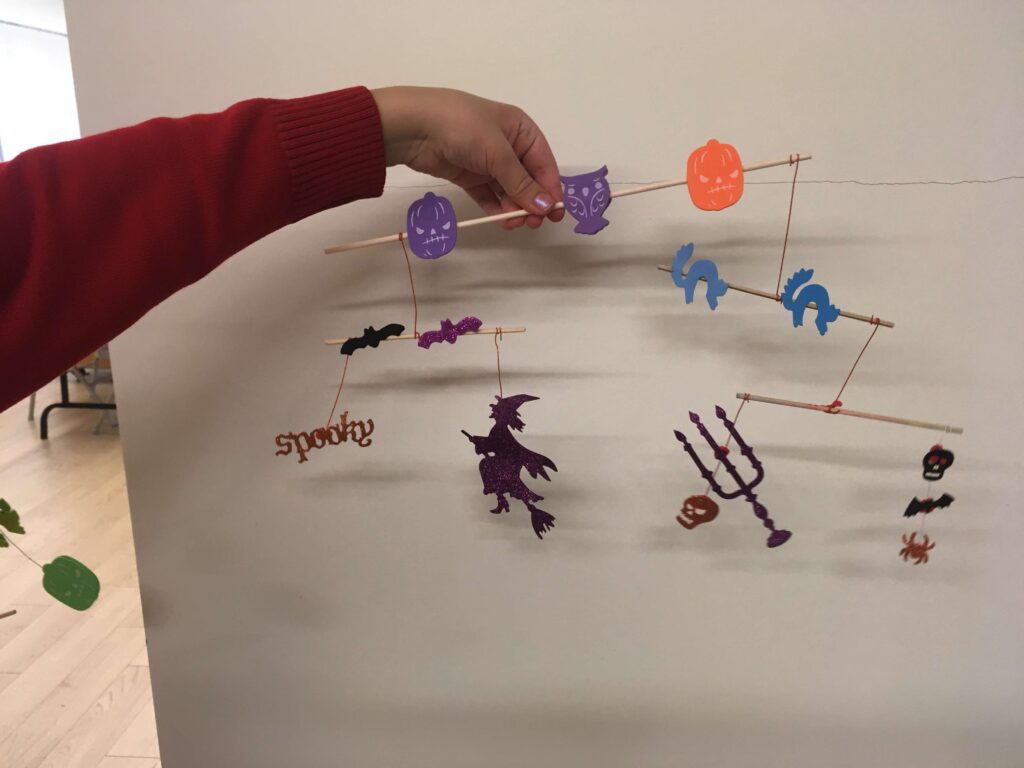
Let’s uncover the ancient art of manipulating heavy weights without the aid of machines. By delving into the fundamental principles of physics, we’ll grasp why Archimedes uttered the famous phrase: “Give me a lever long enough and a fulcrum on which to place it, and I shall move the world.” Through hands-on demonstrations, we’ll witness how the clever use of levers and balance principles can effortlessly move massive objects or create a decorative mobile.
What’s the use of electricity, a part from light, heating, cooking, television, musique and plenty of other things that make our lives easier? Well, to have fun of course ! Let’s make use of electric circuits to make a scribbling robot!
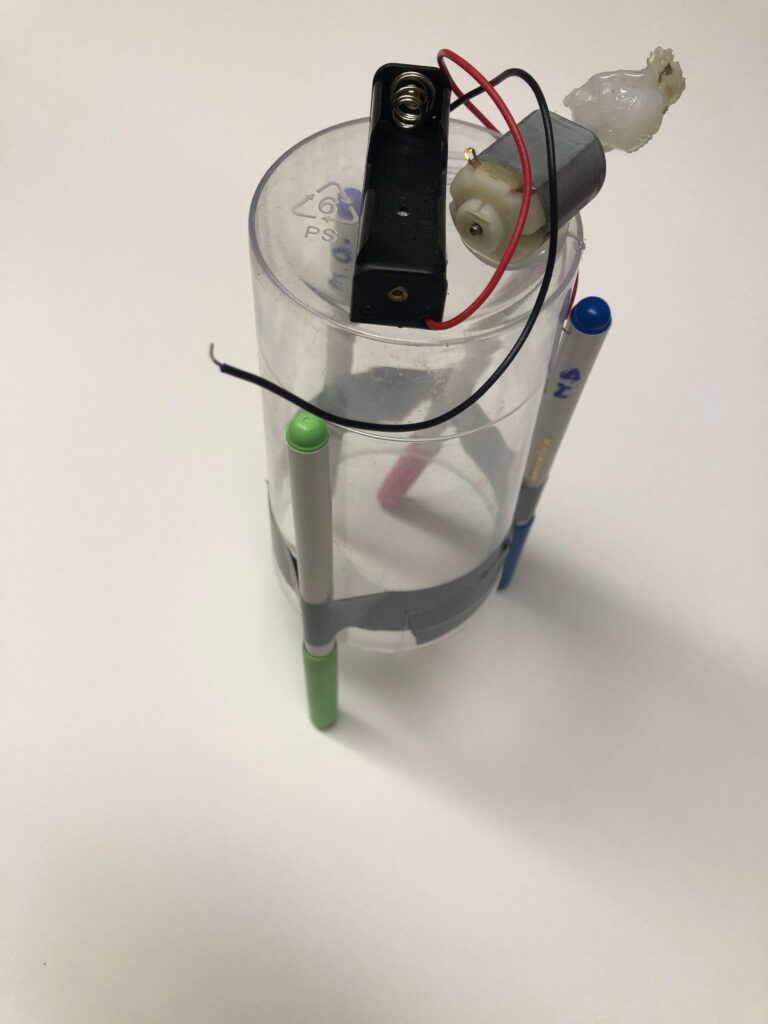
Why settle for thinking of electricity as merely providing light, heat, or powering our electronic devices? In this workshop, we’ll explore a fun aspect of electricity by using circuit principles to create an electric robot capable of making doodles. It’s an exciting opportunity to learn about electrical circuits while having fun and discovering how electricity can be creatively used for playful and interactive projects.
With our home-made stylus, we can control our phone! A wet hand or warm gloves will not deter us from using a screen… As a bonus, we can decorate it as we wish!
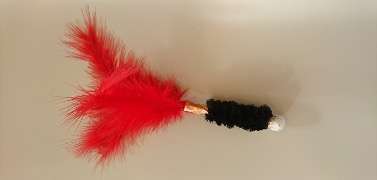
With a homemade stylus, technology is always at hand! Thanks to the principle of electrical conductivity, even a wet hand or woolen gloves won’t be obstacles. Plus, customization is key: you can decorate your stylus as you please (or almost). This way, you’ll be able to control your phone with precision and style, no matter the situation.
Am I trembling or is earth shaking under my feet?” said Ulysses in his epic adventure in the land of the cyclops. He could have known if it’s an earthquake had he done this experiment…
Let’s dive into the mysterious world of earthquakes by building our own seismograph! Inspired by the words of Ulysses during his journey among the Cyclopes, “Is it me trembling, or is it the ground quivering beneath my feet,” we delve into the science behind earthquakes. By constructing this instrument for detecting seismic movements, we uncover how scientists monitor and measure earth tremors. Let’s explore the dynamics of the earth and the nature of earthquakes.